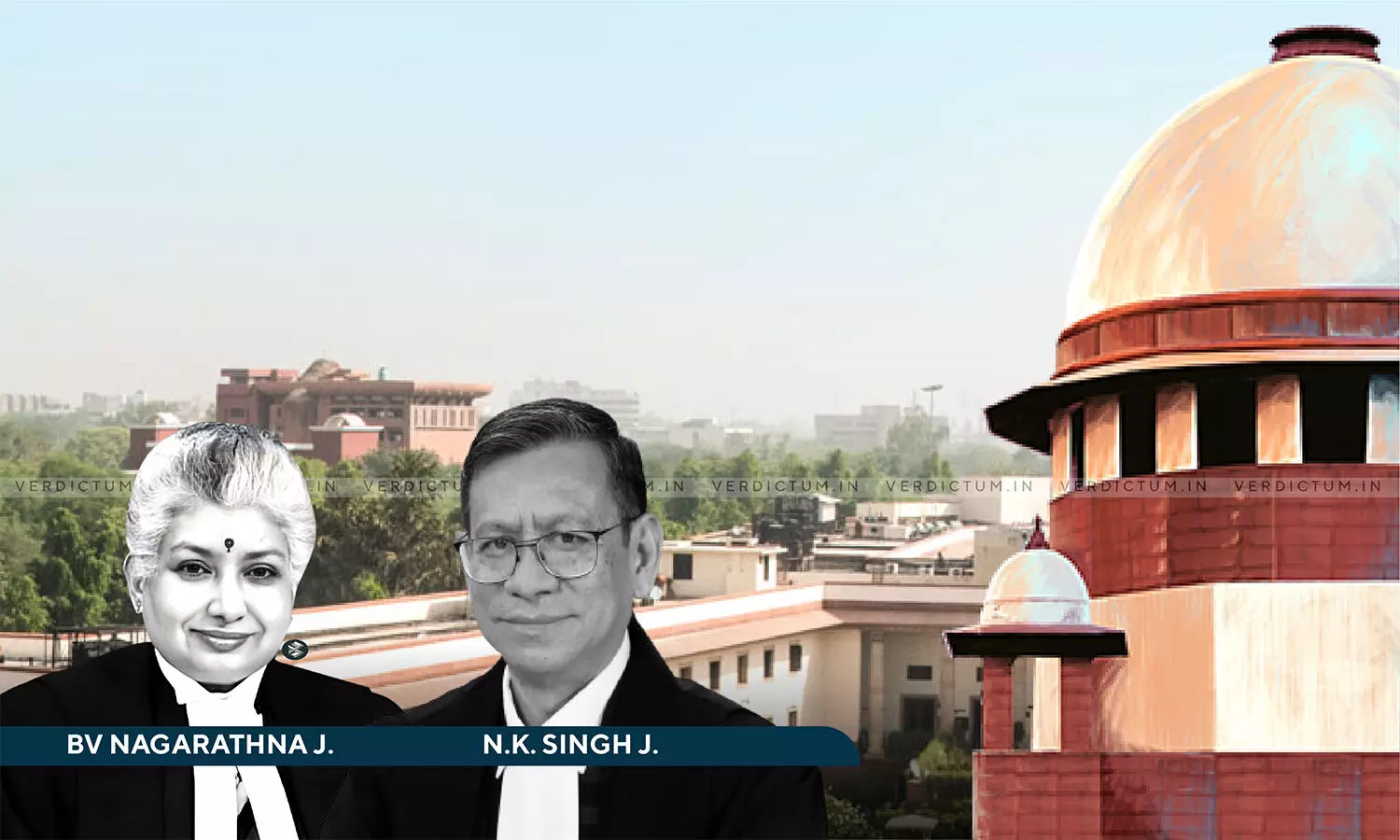
Tartrazine Sunset Yellow FCF Is A Permitted Synthetic Food Colour Which Can Be Applied To Dal Moong Dhuli: SC Overturns Conviction Under Prevention Of Food Adulteration Act
 |
|The Supreme Court has quashed the conviction of a 60 year old man under the Prevention of Food Adulteration Act, 1954 (PFA Act) for using the artificial food coloring Tartrazine in Dal Moong Dhuli.
The Bench of Justice BV Nagarathna and Justice NK Singh held that the appellant's conviction was erroneous, as the use of "Tartrazine" is permitted under the Prevention of Food Adulteration Rules, 1955 (PFA Rules).
On perusal of the Rules, the Court said, "It is evident that the tartrazine Sunset yellow FCF which is yellow in colour is a permitted synthetic food colour, which could be applied to food. In the instant case, the sample of 750 grams of dal moong dhuli, which was tested in the laboratory also noted that synthetic food colour of tartrazine was used on the said sample and consequently, in the total quantity of 15 kgs. which was found in the possession of the appellant for sale. Since Rule 29 permits the said food colour, the conviction of the appellant under Section 16 is erroneous."
The case originated from an August 16, 2011, judgment by a Trial Court, which convicted the appellant under Section 16 of the PFA Act, sentencing him to six months of rigorous imprisonment and imposing a fine of Rs. 1,000. The conviction was based on a laboratory test of a 750-gram sample of Dal Moong Dhuli, which was found to contain Tartrazine, a synthetic yellow food coloring.
The Trial Court had later modified the sentence to three months' imprisonment and increased the fine to Rs. 10,000. The appellant’s subsequent appeals to the High Court of Punjab and Haryana were dismissed, with the conviction upheld in December 2013 and again in a revision petition in March 2019.
Challenging these decisions, the appellant moved the Apex Court, arguing that his conviction was unjustified since Tartrazine is a permitted food coloring under the 1955 Rules.
The Court was informed that the appellant, now 60 years old, had already served one month and eight days in jail and was currently out on bail.
The Bench noted that Rule 28 of the 1955 Rules expressly permits the use of Tartrazine as a synthetic food color. The Court observed that the laboratory tests had confirmed the presence of the permitted food color in the Dal Moong Dhuli sample and that the total quantity of 15 kg found in the appellant’s possession was legally compliant.
Rule 28 of the 1955 Rules lists four permitted synthetic food colors, including Tartrazine Sunset Yellow FCF, while Rule 29 specifies the food items that may contain these colors, including various sweets and snacks.
In light of these provisions, the Supreme Court set aside the previous judgments of the lower courts, concluding that the appellant's conviction was not legally justified.
"Therefore, the order of the High Court sustaining the order of the First Appellate Court as well as the Trial Court convicting the appellant for the aforesaid offenses is set aside," the Court said, exonerating the appellant from all charges.
The Bench ordered, "Consequently, the appellant’s (who was in jail for one month and eight days and presently he is on bail) conviction and sentence is set aside. His bail bonds and sureties are discharged." Accordingly, the Court allowed the Appeal and disposed of the pending applications, if any.
Cause Title: Mahesh Chander @ Mahesh Chand v. State of Haryana
Appearance:-
Petitioner: Advocates Prerna Robin, Shaveta Sanghi, Aditya Sanghi, Lokesh Sharma, B. Shravanth Shanker (AOR), Grahita Agarwal, B. Yeshwanth Raj, Preeti Shukla
Respondent: Advocates Alka Agrawal, Shruti Agrawal, Dr. Monika Gusain (AOR)
Click here to read/download the Order